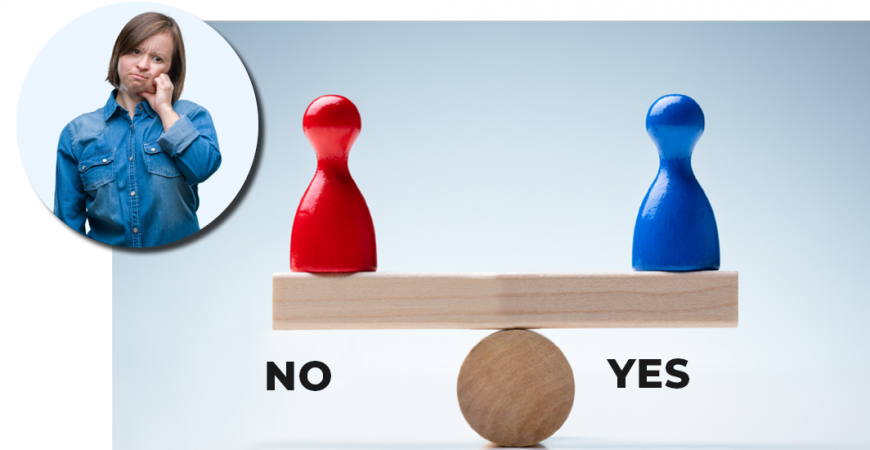Hi, I’m Steve Sutter, and I have problems saying no. (Others: “Hi, Steve…”)
What’s worse is that because I can’t say no, I say yes. I say yes, A LOT. It seems that the only people that I say no to are those that I love and care for the most. That’s something I know that I need to work on and recently kept me up at night thinking of ways to fix it.
It makes perfect sense that for every “yes”, there must be a “no” to counterbalance it. Let’s face it, we can’t do it, buy it, or __________ it ALL. (You fill in the blank here with your own time-sucking activity here.)
I call this process the “yes / no seesaw” effect.

So if it boils down to the fact that your “yes” results in a “no”, it would benefit us to choose your “yes” most wisely. If so, what should be the foundation of your “yes”? (If only we had a measuring stick for how and why we decide our commitments.) For the sake of both efficiency and efficacy, it would make the most sense to align our yeses with our own, personal goals as the end result = increased life satisfaction.
There has never been a simpler concept that is harder to put into practice than aligning your thoughts, emotions, and especially commitments to your goals, right? If it’s difficult for me – I can’t imagine how hard it would be for a person with executive functioning challenges that already experiences difficulty prioritizing tasks, gets overly emotional, fixates on things and has trouble managing their time.
THIS idea, right here, was the foundation for the development of CreateAbility’s OnTracker assistive technology. This solution helps people with intellectual developmental disabilities establish and manage their goals through self-regulation skills. Examples are shifting perspective outward vs. getting caught up in internal struggle, recognizing triggers and establishing boundaries that better align everyday activities and emotions with their own goals. (Our OnTracker pilot study has yielded some amazing results!)
I, personally, have been applying the methodology behind OnTracker to my own life and wow…has it helped me accomplish so much more! While I have to manage just myself, I have extra empathy for DSPs who are not only responsible for the alignment of “yes” responses to goals in their own lives – but also those of the people they serve. The latter is the part we’d love to relieve you of – so you still have the output and energy to take care of YOU, especially in these times. Our Flourish technology solution will help you establish goals for your clients and OnTracker will help them control their responses to life’s stressors so that they can align their action to their goals.
Don’t hesitate to reach out to us for a demo of what OnTracker can do for both the people you serve…and YOU.
As always, we are here to serve you!
Steve
This blog was inspired from an article from CJ McClanahan in 2019.
